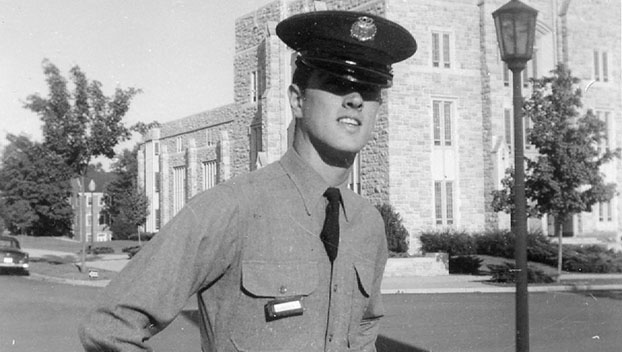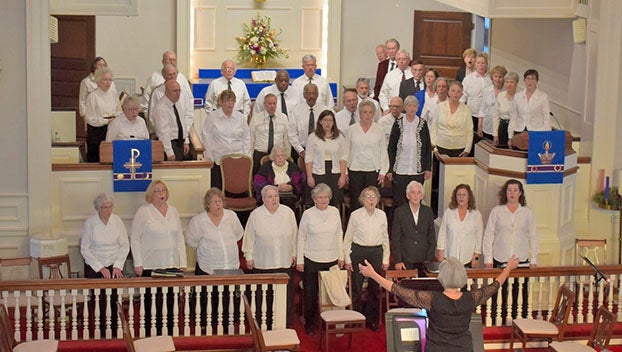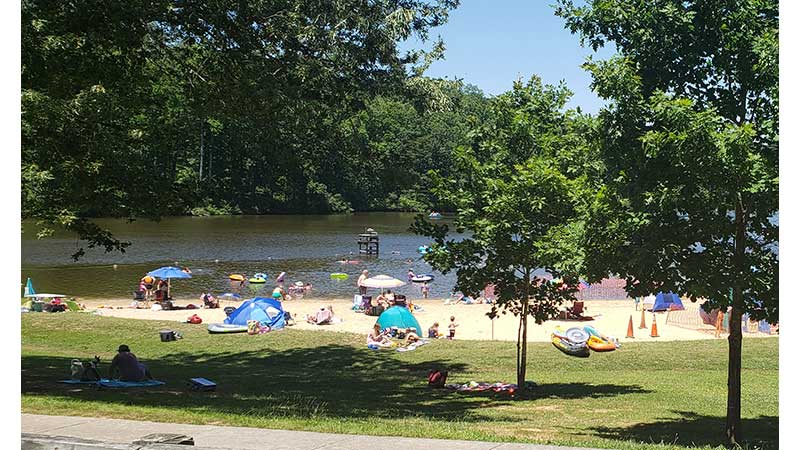Breaking the color barrier in public school sports in the South
Published 2:00 pm Wednesday, February 22, 2023

- What were you doing in 1961 while this drama was playing itself out? The author of this article, Ray Gaskins, was an Air Force ROTC cadet at Virginia Tech, having risen to the rank of cadet corporal by the fall of 1961
|
Getting your Trinity Audio player ready...
|
BY DR. RAY A. GASKINS
Editor’s note: As we head into the final week of the regular season for college basketball, we want to take a step back. We’ve heard of Jackie Robinson breaking the color barrier in baseball, but what about public school sports? Over the next few editions, Dr. Gaskins will present the history of how that happened, both in Farmville and across the South.
In 1958, Federal courts ordered that the public schools in Virginia in the counties of Warren and Arlington, and the cities of Charlottesville and Norfolk, be integrated. Rather than comply with court-ordered integration, “Massive Resistance” Governor J. Lindsay Almond seized and closed certain White public schools in Charlottesville (Lane High School and Venable Elementary School), Warren County (Warren County High School), and the City of Norfolk (see below). No White school was closed in Arlington County, but none were integrated in 1958, either. Since the numbers of White students thrown out of school in Charlottesville and Warren County were much smaller than in Norfolk, things were “manageable” there.
In Norfolk, however, things were not manageable — the governor’s strategy was an unmitigated disaster. Even though all White elementary schools and all Black schools were left open, the closing of six White high and junior high schools had the effect of throwing 10,000 White teenagers out onto the streets. The governor’s strategy was so unpopular that a group of Norfolk citizens sued him and won. The court’s decision was rendered on January 19, 1959, and shortly thereafter the governor threw in the towel. Massive Resistance was dead and all schools previously closed by the governor were reopened on an integrated basis in February 1959.
On Feb. 2, 1959, in Norfolk, 17 previously chosen Black students were assigned to the three high schools: Granby (1), Maury (1), and Norview (7), and the three junior high schools: Blair (2), Northside (1), and Norview (5). These students became known as “The Norfolk 17.” (When the schools reopened, many White seniors didn’t return, becoming known as “The Lost Class of 1959.” For example, Norview, designed to accommodate 1800 students, graduated only 177 seniors in 1959. Seniors failed to return for a variety of reasons — some got jobs or got married and never graduated, others transferred to private schools in Norfolk or public schools in neighboring counties or cities, and still others moved out-of-state.)
The seven Black students who attended Norview were mostly from Norfolk’s Booker T. Washington High School. Andrew “Andy” Heidelberg (1943-2015) was one of those seven. He enrolled at Norview with the aspiration of playing varsity football at Chittum Field, where sellout crowds of more than 10,000 were the norm. But the White football players assured him that he “would never put on a Norview Pilots uniform.” It would take three years, but they would turn out to be quite wrong.
Andy was not being singled out. None of the Black students were allowed to participate in “extra curricula activities,” such as, the Junior/Senior Prom, the National Honor Society, and sports. Consequently, some of the Black students, discouraged by this hostile treatment, returned to Booker T. Washington, but Andy soldiered on. Norview athletics had its share of problems too. Even though Norview did not have a Black player on any team, some schools, such as Oscar Smith, dropped them from their entire sports schedule simply because they were integrated.
In 1959, to have something to do after school, Andy joined one of the football teams in the Norfolk Recreation League and helped them win the City Championship. In 1960, as a rising junior, he was allowed to try out for the Norview Pilots football team. Although he performed well, he was cut before school started, so it was back to the Norfolk Recreation League and another City Championship.
What Andy wanted in the worst way was a Norview Pilots Letter Sweater. One of his teachers suggested that he participate in Norview intramural sports as a way of earning points towards a sweater. Say no more, he participated in every intramural sport that he could. The results were astounding. Andy won championships in track, horseshoes, and table tennis, and earned enough points for a Norview Pilots sweater.
By 1961, his senior year, his perseverance paid off. He not only became the first Black to put on a Norview Pilots uniform, but also was the first Black to play varsity football for a previously all-white public school anywhere in Virginia or the South. According to Andy, Ken Whitley, team captain, “shook my hand and told me welcome to the Norview Pilots football team. It was the greatest feeling of my life.” According to Whitley, it didn’t take long for Norview fans to warm up to Andy. “In his first football game at Norview, he scored a touchdown on a punt return. That was enough to turn the crowd. They started yelling: ‘We want Andy.’”
Andy found the Norview football team to be a first-class operation. The team trainer and the team doctor treated him the same as any other team member, even though he was probably “the first black person [they] ever treated.” In The Norfolk 17 (2006) Andy wrote: “(Making the football team) was even bigger than I had imagined. We had the best of everything at Norview. They treated us like pros. The days of open jeering and overt racial remarks are gone. I have lots of friends and can go just about anywhere in the school without fearing trouble. Maybe now it’s alright to let the world know how happy I was. I was extremely happy. I was on top of the world and going to football practice was a joy within itself.”
Andy, Ken and Zongo (Calvin Zongolowicz) were the three starters in the backfield and developed a friendship that lasted well beyond football. (Andy was not the first Black to break the sports color barrier, however. That honor belongs to a friend of his, Reginald Young, at Maury High School. Although Reggie was the only Black student at Maury, in something of a public relations coup, he was placed on the 1960 Maury baseball team, becoming the first Black to play any sport on a varsity team at a previously all-white public school in Virginia.)
Andy, who played halfback, turned out to be a star-in-waiting. Nothing breeds solidarity like success, and after helping Norview win its first game by scoring two touchdowns, his fellow players began to come around. After the game a reporter asked him if he thought they cut him last year because he was too light. His answer became an instant classic: “No, it wasn’t because I was too light. I think I was too dark.” Andy didn’t know it at the time, but he was on a collision course with the Town of Farmville, one that would have the unintended consequence of solidifying his acceptance as a full member of the Norview Pilots football team.
DR. RAY A. GASKINS serves as professor emeritus at Hampden-Sydney College.





